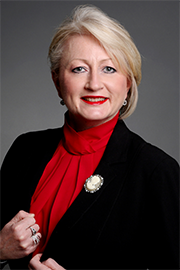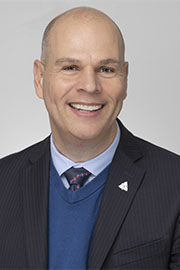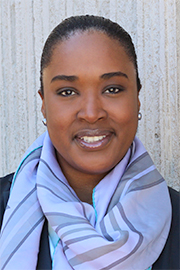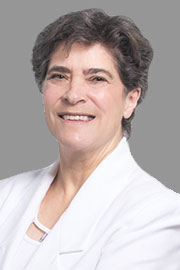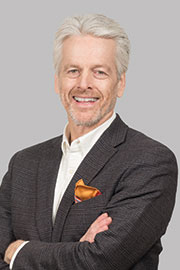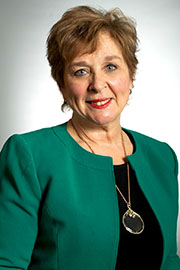- Feb/27/23 11:30:00 a.m.
President of the Treasury Board.
The House recessed from 1141 to 1300.
Miss Surma moved first reading of the following bill:
Bill 69, An Act to amend various Acts with respect to infrastructure / Projet de loi 69, Loi modifiant diverses lois sur les infrastructures.
First reading agreed to.
First reading agreed to.
On the Standing Committee on Finance and Economic Affairs, Ms. Begum replaces MPP Kernaghan.
Is it the pleasure of the House that the motion carry? Carried.
Motion agreed to.
- Hear!
- Rabble!
- Feb/27/23 11:30:00 a.m.
First, I want to thank Grace Bruno of Ottawa for sending this petition in. It’s a very important petition to extend access to post-adoption birth information.
“To the Legislative Assembly of Ontario:
“Whereas current legislation does not provide access to post-adoption birth information (identifying information) to next of kin if an adult adopted person or a natural/birth parent is deceased;
“Whereas this barrier to accessing post-adoption birth information separates immediate family members and prohibits the children of deceased adopted people from gaining knowledge of their identity and possible Indigenous heritage;
“We, the undersigned, petition the Legislative Assembly of Ontario to extend access to post-adoption birth information (identifying information) to next of kin, and/or extended next of kin, if an adult adopted person or a natural/birth parent is deceased.”
I fully agree with this petition. I’ll sign it and give it to page Rohan to deliver to the table.
- Hear!
- Rabble!
- Feb/27/23 11:30:00 a.m.
- Re: Bill 70
The bill proclaims the month of June in each year as Seniors Month.
Seniors Month will place a greater significance on the health and well-being of our seniors and will serve as a catalyst to keep our older adults socially connected and engaged in their respective communities.
- Hear!
- Rabble!
- Feb/27/23 11:30:00 a.m.
My question is to the Premier. Recently, the city of Toronto has created a subcommittee out of frustration and the need for more insight and input into the massive Ontario Line project. This means that they’re going to have to dedicate city staff and other resource time to make sure that they can actually staff those committee hearings.
They’ve slammed Metrolinx and the provincial government, who are charged with building the subway line, for being too secretive.
When will the government finally give public answers about when they expect the Ontario Line to be completed and how much it will cost?
The Ontario Line has already doubled in cost. It is going to be the most expensive and overpriced transit line in the history of Ontario. Local businesses and taxpayers want to know—they demand an answer: Are they going to get a good deal from this government, especially since the notifications around tree removal and other types of construction headlines are being blocked by someone in the ministry?
My question is: Will this government actually provide the information that the city of Toronto and the residents deserve? Will they give it to them in a timely fashion and when will my community get an apology for the fact that they were blocked from notifications for the removal of the trees in Osgoode Hall as well as Moss Park?
- Hear!
- Rabble!
- Feb/27/23 11:30:00 a.m.
I want to thank the member for Nickel Belt for her work on this petition to keep the Noëlville OPP detachment open. It’s important to many people in that area, including Robert Mayer from Sudbury and my in-laws, who actually live in Noëlville.
“Whereas insufficient communications and consultations have taken place with communities and relevant stakeholders concerning the OPP Noëlville detachment’s continuing operations; and
“Whereas the residents and visitors in the municipalities of French River, Markstay-Warren, St.-Charles, Killarney and Britt-Byng Inlet as well as the First Nations of Dokis and Henvey Inlet deserve equitable access to a reliable, timely and efficient police response;
“We, the undersigned, petition the Legislative Assembly of Ontario to direct the Ministry of the Solicitor General and the Ontario Provincial Police to continue having Ontario Provincial Police officers reporting to an operational detachment location in Noëlville.”
I support this petition, Speaker. I’ll affix my signature and give it to page Liyao.
- Hear!
- Rabble!
- Feb/27/23 11:30:00 a.m.
Our government will continue to make historic and unprecedented investments into the health sector across this province. Just last year, we invested an additional $5.2 billion to support the delivery of health care services all across this province. That included investing and making sure that we increased or actually opened up additional medical seats for those in the north to ensure that there was better care for residents across all parts of this province.
We’re continuing to ensure that we make the necessary investments in health human resources: over 12,000 nurses were registered, a record year in this province. We will continue to make sure that those investments are being made all across this province.
Mr. Speaker, our government will continue to make these historic and unprecedented investments across this province. We ask the members opposite to stop voting against many of those measures that we have put up, including this historic investment of over $5 billion in additional support, and join our government in increasing investments in health care across this province.
- Hear!
- Rabble!
- Feb/27/23 11:30:00 a.m.
This petition is entitled “Make Registered Psychotherapy Services Tax-Free.
“To the Legislative Assembly of Ontario:
“Whereas mental health ... is health care;
“Whereas the mental health crisis facing Ontarians has gotten worse with the pandemic;
“Whereas BIPOC, 2SLGBTQIA+ folks, women, and people with disabilities have historically faced significant barriers to accessing equitable health care services due to systemic discrimination;
“Whereas registered psychotherapists provide vital mental health services, especially as an early intervention;
“Whereas a 13% tax added to the cost of receiving psychotherapy services is another barrier for Ontarians seeking this vital care;
“Whereas registered psychotherapists are still required to collect HST from their clients, while most other mental health professionals have been exempted;
“Therefore we, the undersigned, petition the Legislative Assembly of Ontario to pass the Making Psychotherapy Services Tax-Free Act” by MPPs Andrew and France Gélinas “immediately, to remove this barrier to access to mental health services.”
I firmly support this petition. I have affixed my signature and will hand it to Wyatt for the table.
- Hear!
- Rabble!
- Feb/27/23 1:10:00 p.m.
“To the Legislative Assembly of Ontario:
“Whereas it currently takes on average 18 months for people in Ontario to get an official dementia diagnosis, with some patients often waiting years to complete diagnostic testing;
“Whereas more than half of patients suspected of having dementia in Ontario never get a full diagnosis; research confirms that early diagnosis saves lives and reduces care-partner stress;
“Whereas a PET scan test approved in Ontario in 2017 which can be key to detecting Alzheimer’s early, is still not covered under OHIP in 2022;
“Whereas the Ontario government must work together with the federal government to prepare for the approval and rollout of future disease-modifying therapies and research;
“Whereas the Alzheimer Society projects that one million Canadians will be caregivers” between 2023 and 2043 in the province of Ontario; and
“Whereas the government must follow through with its commitment to ensure Ontario’s health care system has the capacity to meet the current and future needs of people living with dementia and their care partners;
“Therefore we, the undersigned, call on the Legislative Assembly of Ontario to develop, commit and fund a comprehensive Ontario dementia strategy.”
I fully support this. For the love of humanity, let’s get it done.
- Hear!
- Rabble!
- Feb/27/23 1:10:00 p.m.
I would like to thank Diane Roy from Westree in my riding for the petition.
“Gas Prices....
“Whereas northern Ontario motorists continue to be subject to wild fluctuations in the price of gasoline; and
“Whereas the province could eliminate opportunistic price gouging and deliver fair, stable and predictable fuel prices; and
“Whereas five provinces and many US states already have some sort of gas price regulation; and
“Whereas jurisdictions with gas price regulation have seen an end to wild price fluctuations, a shrinking of price discrepancies between urban and rural communities and lower annualized gas prices;”
They petition the Legislative Assembly as follows:
“Mandate the Ontario Energy Board to regulate the price of gasoline across Ontario in order to reduce price volatility and unfair regional price differences while encouraging competition.”
I support this petition. I will affix my name to it and send it to the table with my good page Liyao.
“911 Everywhere in Ontario.
“Whereas when we face an emergency we all know to dial 911 for help; and
“Whereas access to emergency services through 911 is not available in all regions of Ontario but most Ontarians believe that it is; and
“Whereas many Ontarians have discovered that 911 was not available while they faced an emergency; and
“Whereas all Ontarians expect and deserve access to 911 service, throughout our province;”
They petition the Legislative Assembly as follows:
“To provide 911 emergency response everywhere in Ontario by land line or cellphone.”
I fully support this petition. I will affix my name to it and ask page Yonglin to bring it to the Clerk.
“Let’s Fix the Northern Health Travel Grant.
“Whereas people in the north are not getting the same access to health care because of the high cost of travel and accommodations;
“Whereas by refusing to raise the Northern Health Travel Grant (NHTG) rates, the Ford government is putting a massive burden on northern Ontarians who are sick;
“Whereas gas prices cost more in northern Ontario;”
They petition the Legislative Assembly as follows: “to establish a committee with a mandate to fix and improve the NHTG;
“This NHTG advisory committee would bring together health care providers in the north, as well as recipients of the NHTG to make recommendations to the Minister of Health that would improve access to health care in northern Ontario through adequate reimbursement of travel costs.”
I fully support this petition, Speaker. I will affix my name to it and ask my good page Yonglin to bring it to the Clerk.
- Hear!
- Rabble!
- Feb/27/23 1:10:00 p.m.
I’d like to begin by thanking Dr. Sally Palmer, who has continued to keep up awareness about the conditions for people living on ODSP.
“Whereas Ontario’s social assistance rates are well below Canada’s official Market Basket Measure poverty line and far from adequate to cover the rising costs of food and rent: $733 for individuals on OW and soon $1,227 for ODSP;
“Whereas an open letter to the Premier and two cabinet ministers, signed by over 230 organizations, recommends that social assistance rates be doubled for both Ontario Works (OW) and the Ontario Disability Support Program (ODSP);
“Whereas the recent budget increase of 5% for ODSP, with nothing for OW, could be experienced as an insult to recipients, who have been living since 2018 with frozen social assistance rates and a Canadian inflation rate that reached 12%;
“Whereas the government of Canada recognized in its CERB program that a basic income of $2,000 per month was the standard support required by individuals who lost their employment during the pandemic;
“We, the undersigned citizens of Ontario, petition the Legislative Assembly to double social assistance rates for OW and ODSP.”
I fully support this petition. I will affix my signature and give it to Adam.
- Hear!
- Rabble!
- Feb/27/23 1:10:00 p.m.
This petition is “Protect the Greenbelt and Repeal Bill 23.
“Whereas Bill 23 will remove protected land from the greenbelt, allowing wealthy developers to profit by bulldozing over 7,000 acres of farmland;
“Whereas green spaces and farmland are what we rely on to grow our food, support natural habitats, prevent flooding and mitigate future climate disasters;
“Whereas Ontario loses 319.6 acres of farmland daily to development; and
“Whereas the government’s Housing Affordability Task Force found there is plenty of places to build homes without paving over the greenbelt, showcasing that Bill 23 was never about housing;
“Whereas the power of conservation authorities will be taken away, weakening environmental protections from protecting future development;
“We, the undersigned, petition the Legislative Assembly of Ontario to immediately repeal Bill 23, stop all plans to further remove protected land from the greenbelt and protect existing farmland in the province by passing the Protecting Agricultural Land Act.”
- Hear!
- Rabble!
- Feb/27/23 1:10:00 p.m.
“To the Legislative Assembly of Ontario:
“Whereas Ontario’s social assistance rates are well below Canada’s official Market Basket Measure poverty line and far from adequate to cover the rising costs of food and rent: $733 for individuals on OW and (soon) $1,227 for ODSP;
“Whereas an open letter to the Premier and two cabinet ministers, signed by over 230 organizations, recommends that social assistance rates be doubled for both Ontario Works (OW) and the Ontario Disability Support Program (ODSP);
“Whereas the recent small budget increase of 5% for ODSP still leaves these citizens below the poverty line, both they and those receiving the frozen OW rates continue struggling to live during a period of alarming inflation;
“Whereas the government of Canada recognized in its CERB program that a ‘basic income’ of $2,000 per month was the standard support required by individuals who lost their employment during the pandemic;
“We, the undersigned citizens of Ontario, petition the Legislative Assembly to double social assistance rates for OW and ODSP.”
I fully support this petition and will pass it to page Riya to take to the table.
- Hear!
- Rabble!
- Feb/27/23 1:10:00 p.m.
I want to thank Simon Taggart, from Ottawa Centre, for submitting this petition to me, as well as a number of neighbours. It reads:
“To the Legislative Assembly of Ontario:
“Whereas as part of the Highway 417 bridge replacement and operational improvements project, the Ministry of Transportation plans to replace the existing steel noise barriers with translucent Acrylite barriers in the area abutting Highway 417 from Clarendon Avenue and heading west to the Island Park Drive exit ramp (a distance of roughly 188 metres);”
Be it further resolved that “these translucent Acrylite noise barriers are designed to allow light penetration and provide a visual link between the highway and the surrounding area; for the majority of their length, the new barriers would be installed at or just above ground level in a residential area.... As a result, the surrounding homes and neighbourhood would have a visual of the roadway and be exposed to light from vehicles” all day “and the highway lighting system;
“We, the undersigned, petition the Legislative Assembly of Ontario as follows:
“We hereby request that the Ministry of Transportation replace the existing steel barriers with a fully opaque noise barrier solution in the location abutting Highway 417 from Clarendon Avenue and heading west to the Island Park Drive highway exit ramp. We feel strongly that the use of a translucent barrier in this location will negatively impact residents in the adjacent homes and surrounding neighbourhood by allowing the infiltration of light pollution and providing an unattractive visual of the often congested highway.”
I’m happy to sign this petition and I’ll be sending it with Liyao to the Clerks’ table.
- Hear!
- Rabble!
- Feb/27/23 1:20:00 p.m.
Ms. Stiles has moved opposition day number 1.
Would the Leader of the Opposition care to lead off the debate?
- Hear!
- Rabble!
- Feb/27/23 1:20:00 p.m.
I move that:
Whereas more than a third of operating rooms in Ontario’s public hospitals do not meet the 90% target for operating room use, mostly due to lack of funding and staff needed to run all the province’s operating rooms simultaneously;
Whereas the government permitted the crisis in our health care system to persist while billions of dollars in unspent public funds are allocated to contingency funds instead of Ontario hospitals that are struggling to maintain quality of care due to understaffing; and
Whereas the Ford government is appealing the Superior Court ruling, declaring Bill 124, Protecting a Sustainable Public Sector for Future Generations Act, 2019, unconstitutional, despite the minister being told about the devastating impact on hiring, recruitment and retention of health care workers;
Whereas the infrastructure to expand surgical capacity already exists and is sitting idle in public hospitals but the government is choosing to spend taxpayer funds on investor-owned, for-profit surgical suites; and
Whereas high-quality facilities across the province have idle operating room time, such as Health Sciences North, which is only funded to use 14 out of 17 state-of-the-art operating rooms and Toronto’s University Health Network, which is unable to simultaneously run all of their operating rooms because of understaffing;
Therefore, the Legislative Assembly calls on the government to fund and fully utilize public operating rooms instead of further privatizing hospital operating room services.
Make no mistake: Today’s health care crisis is a manufactured one. It is a staffing crisis caused by years of underfunding, exacerbated by the pandemic, and made worse by the Ford government’s ideological decision to suppress workers’ wages and then take them to court over it, rather than help Ontarians in pain.
Today’s motion, if passed, would represent a step forward to resolving this government’s health care crisis. By investing the money we already have—funds already earmarked for health care—we could increase capacity in publicly owned operating rooms we’ve already built to reduce wait times. We can get people the relief they need today.
Speaker, over the weekend I listened to the story of Nathan Gilson and his family on CBC Radio. They live in Waterloo. In the fall of 2021, Nathan was just 14 when he was diagnosed with scoliosis in his spine. Left untreated, it can cause a variety of health issues, and at 14 Nathan was already experiencing pain in his ankles and knees. His surgery was scheduled for April. Nathan and his family were ready, but shortly before, they received some bad news: His surgery had to be postponed due to capacity. His mom, Shelley, said it was like having the rug pulled out from under them.
Speaker, I have two children, and there’s no worse feeling in the whole world than watching your child experience pain and not being able to do anything about it, so I can only imagine what it felt like when Nathan’s surgery was delayed a second time, then a third, then a fourth.
The long wait was taking a toll on Nathan. His spine shifted by 10 degrees over just three months. Delay after delay made it feel as though he missed a chunk of growing up. Just hours before his fifth—fifth—surgery date, Nathan was told he’d have to wait longer again. His mom, Shelley, said the most heartbreaking thing was hearing him say, “They don’t care about me, Mom.”
Finally, more than a year after his diagnosis, Nathan had the surgery he needed, and the 14-hour procedure was a success, thankfully.
But Nathan’s story is just one of hundreds we’ve heard from every corner of this province, of people waiting years for surgeries while operating rooms sit with lights off because there aren’t enough staff to run them.
Nathan could have had the procedure he needed much sooner had Ontario’s top-notch public operating rooms been allowed to operate at full capacity. Nathan could have spent more time hanging out with his friends and more time in school and less time in pain.
We need to reduce wait times for people like Nathan, and we need to reduce those wait times now, and we can by funding and fully utilizing public operating rooms instead of further privatizing our system.
When hospitals compete for staff with these new private, for-profit surgical centres that the government is planning, it’s our emergency rooms and urgent care centres that are going to suffer the most. Ontario already has more than 42,000 health care job vacancies—42,000—a fourfold increase in less than a decade.
Let’s be clear: Under the government’s plan, the staffing problem in emergency rooms will worsen. Hospital workers we do have will be incentivized to go to work in the for-profit clinics on the promise of higher wages, shorter hours and better working conditions. It will mean that we may see even more hospitals close their emergency rooms, and even more often, to manage a yet worsening staffing crisis. Communities will have an even harder time accessing services close to home because for-profit centres won’t be as profitable there. And the few health care workers we have in northern Ontario will be even further incentivized to leave.
I’m proud to support today’s motion to prioritize public operating rooms because it will reduce wait times right now and retain the health care workers we need in the public system.
Speaker, we know that spending public money on private procedure clinics also winds up being considerably more expensive, both for the government and for individual patients. For-profit clinics cost the public system more because of facility fees that cover overhead, the cost of technicians, the equipment, the supplies and the infrastructure.
Let’s look at cataract surgeries as an example. OHIP pays a flat flee of $500 per patient to public hospitals for these procedures. If it costs less, the remaining money is reinvested back into public patient care. With for-profit clinics, OHIP pays a flat fee of $605 per patient for a single cataract surgery—$1,015 for both eyes. And if the clinic’s actual costs are lower—which is, of course, always their goal—the money lines the shareholders’ pockets. It doesn’t go back into patient care.
This wasted public money adds up. About 150,000 cataract surgeries are performed in Ontario every year. That’s $90 million in public money that could be redirected to for-profit clinics if we’re not careful. That’s going to cost patients more out of pocket, too—and we heard about this earlier today—through the upselling and additional user fees.
In fact, in 2021, Ontario’s Auditor General found private clinics already deliberately misleading patients for unnecessary add-ons. Patients were coerced into buying expensive lenses—as much as $5,000 per eye—to qualify for surgery. This compromises patient choice and quality of care. Patients are often worried that if they don’t pay, they won’t be able to get the appointments, or that they could receive worse or even unsafe care. And let’s not forget, this is at a very vulnerable moment.
Speaker, I want to say again that I am proud to support today’s motion to prioritize public operating rooms because it will save the government and patients a great deal of money and will result in better care.
We know the Ford government’s move toward an investor-driven model will also put Ontarians’ safety at risk. Evidence from all over the world shows that profit-driven health care results in poorer outcomes. This makes sense when you consider that a for-profit clinic will always put its shareholders’ interests first.
We are already seeing the impact of this in Ontario. A 2012 report from CPSO noted that nearly a third of all out-of-hospital clinics fell far short of safety standards. That same year, the Toronto Star found nine patients of the for-profit Rothbart Centre for Pain Care who developed serious infections. Further investigations found there were 170 infection-control deficiencies there. They even found 11 patients who contracted hepatitis C at for-profit colonoscopy clinics over three years.
In a private clinic, if a patient experiences a complication, they have to be transported—guess where?—to an emergency room. That costs precious time and puts further strain on the system—while those in a public operating room receive care faster.
Ontarians are demanding that we not go further down the road of privatization of public care.
Today’s motion to prioritize public operating rooms will better ensure patient safety. It will lead to better health outcomes. It will help fix the staffing crisis right now. It will shorten wait times to get Ontarians the care they need faster. It will cost the government less and deliver more. And it will help ensure all Ontarians have better access to safe, quality care from our province’s trusted health care heroes. We already have the money to do it. It has already been earmarked for health care, and the infrastructure is already in place.
I want to urge all my colleagues in the Legislature today to prioritize public operating rooms. Let’s get the lights back on, fill those available shifts, and get patients like Nathan the relief they need now so no one has to wait any longer.
- Hear!
- Rabble!
- Feb/27/23 1:30:00 p.m.
It’s a pleasure to rise today to respond to this opposition day motion and highlight some of the many investments and new programs our government is making to clear the surgical backlog and improve the patient experience across the province.
Honestly, Madam Speaker, the Leader of the Opposition said, “if only Ontario’s ORs are allowed to operate at full capacity”—well, I can tell you, they are allowed to operate at full capacity. She said that by prioritizing hospital ORs, we’ll be reducing wait times right now. Well, since the beginning of the pandemic, our government has been investing in prioritizing hospital ORs. We’ve invested $880 million in surgical recovery funding, almost a billion dollars, for our hospitals to increase—that’s just for them to increase; that’s in addition to the other funds they get—surgical hours and address procedures that were delayed as a result of the COVID-19 pandemic. That money is to fund more surgeries and diagnostics at hospitals, including opening more operating rooms, more for longer hours, and more on evenings and weekends, when possible.
But hospitals are independent corporations that make their own decisions about how best to use their resources. The government does not dictate how many ORs they open at any particular time on any particular day. That is up to the hospital to decide and to make sure they have the staffing in place to do so.
Although we have put in an extra billion dollars—almost $880 million—so far we haven’t got the backlog cleared. The money has gone some way to clear the backlog, but our government knows that people like Nathan, who was mentioned, are still waiting way too long. We don’t want Nathan to have to suffer, or to wait, or to have five rescheduled surgeries. We don’t think that’s appropriate, and that is why we’re taking more steps. We added an additional $330 million for the hospital surgery backlog this year, for hospital operating rooms.
Unfortunately, we’ve done what the Leader of the Opposition suggests, by prioritizing hospitals and giving them a lot of extra money, but there are limits to what hospitals can do with those resources. They can do as much as they can, and that’s what they’re doing.
But Nathan shouldn’t have to wait, so our government is taking that next step. The next step is making it faster and easier for people to access surgeries and procedures they need, by better integrating and using community and diagnostic centres to increase capacity and to complete more publicly funded services—and these, increasing community capacity, target patients who will have been waiting the longest amount of time for their treatment, and expand available options to receive safe and quality care. This will mean shorter wait times for common but vital surgeries such as cataract and hip and knee surgery—eventually; that will be in 2024—and you can expect, people of Ontario, shorter wait times for diagnostic services, as well, such as MRIs and CT scans. We’re starting by tackling the existing backlog for cataract surgeries, which has one of the longest wait times for procedures.
Just let me take a moment to digress a bit, because the Leader of the Opposition had some story about saving money and said that cataract surgeries cost an OHIP fee of $500 in a hospital, whereas at a for-profit clinic they cost $605. I wrote down what she said. The fact is that a clinic will get a fee that includes a facility fee—that’s maybe the $605, assuming those numbers are accurate; I’ll give her the benefit of the doubt—but the hospital doesn’t just get the $500 OHIP fee. The OHIP fee goes to the doctor performing the surgery, but the hospital gets hospital funding, infrastructure renewal funding, nursing funding and a whole bunch of other funding, and believe me, the clinics don’t get that. They just get the $605 mentioned by the member opposite. So it’s very misleading, I would say, to say that one kind of person is getting more than the other. That is not the way it is. The fee is a $500 OHIP fee plus a facility fee in a clinic.
The other thing I want to point out is that the member said that more than a third of operating rooms in Ontario public hospitals do not meet the 90% target for operating room use. I think she pulled this from a December 2021 report of the Auditor General, so I think that might be dated. However, if we’re going to pull from that report, let me just add this quote from the Auditor General’s December 2021 report: “Studies have shown that outpatient surgeries can be performed more efficiently and cost-effectively when performed in an ambulatory setting. As well, because these ambulatory settings often specialize in a handful of types of surgeries, more can typically be done in a day as compared to the number that are performed in a general hospital setting. For example, a 2014 study released in Health Affairs (a peer-reviewed journal on health policy and research) found that procedures done in ambulatory surgery centres took about 31.8 minutes (25%) less time than those in hospitals. Estimated cost savings ranged from approximately $363–$1,000 per outpatient case, depending on the surgery.” That’s the quote from the same Auditor General’s report that my friend opposite has quoted from. Clearly. there’s a difference of view there.
Madam Speaker, as I said, we’re targeting shorter wait times for common but vital surgeries such as cataracts, hip and knee replacements so the people of Ontario can expect shorter wait times for those things and for diagnostic services such as MRI and CT scans, because this government thinks they’re waiting too long. And we’ve started by tackling the backlog for cataract surgeries—as I’ve said, one of the longest waits for procedures. This past month, we issued four new licences to health centres in Windsor, Kitchener-Waterloo and Ottawa to support an additional 14,000 publicly funded cataract surgeries annually. As I said the other day when I was quoting the member from Thunder Bay–Superior North, people are delighted to not have to wait so long to get their surgeries. They’re very excited to be able to get on with their lives. These additional volumes make up 25% of the province’s current cataract wait-list, and this will significantly reduce the surgical backlog.
In addition to shortening times, providing these publicly funded services through community surgical and diagnostic centres will allow hospitals to focus their efforts and resources on more complex and high-risk surgeries such as Nathan’s surgery. He’ll be able to get in sooner as a result.
We’re also investing more than $18 million in existing centres to cover care for thousands of patients, including 49,000 hours of MRI and CT scans, 4,800 cataract surgeries, 900 ophthalmic procedures of other varieties, 1,000 minimally invasive gynecological surgeries, and 2,845 plastic surgeries. As a result, surgical wait-lists will return to pre-pandemic levels, it is anticipated, by March 2023. And as always, these services will continue to be provided at no cost to the patient, with their Ontario health card.
Beyond all the work our government is doing to address the surgical backlog, we’re also building up our health care system for the future. One of the key investments that we’re making is to achieve this through the expansion of access to primary care. When people have health care available in their communities and in ways that are convenient for them, they’re much more likely to seek and receive the treatment they need when they need it and stay healthier. Delivering convenient care to people in their communities will help Ontario stay healthier by diagnosing illnesses earlier, starting treatments as soon as possible, and keeping emergency wait times down when you and your family need urgent care.
Ontario leads the country in the number of people who benefit already from a long-term, stable relationship with a family doctor or primary care provider. Over 90% of Ontarians has a regular health care provider. But we can do more, and we will do more.
That’s why we’re increasing training opportunities at the same time as expanding team models of primary care across the province of Ontario. Work is already under way to train the next generation of doctors, nurses, personal support workers and other health care professionals in this province.
We’re expanding training spots to more health professionals in Ontario every year, with 455 new spots for physicians in training, 52 new spots for physician-assistant training spots, 150 new nurse practitioner spots, 1,500 additional nursing spots, and 24,000 personal support workers in training by the end of 2023.
This is all very good news for Ontarians. By adding new health human resources to Ontario’s workforce, more team-based care will be made available to Ontarians.
When family physicians work in a team model alongside other physicians, nurses, dietitians, social workers, pharmacists and other health care professionals to deliver programs and services, you get better continuity of care and more access to after-hours care.
We’re increasing the number of spots for physicians to join a team model of care through the expansion of existing family health organizations, and allowing new ones to form. This will add up to 1,200 physicians in this model over the next two years, starting with an additional 720 spots for physicians joining our family health organization model in 2022-23 and 480 spots in 2023-24. These family health organizations will be required to provide comprehensive primary care services, extend evening and weekend hours of practice, and provide more weekend coverage so people can access a family physician when they need it.
Team models of primary care have demonstrated how bringing health care providers together as one team can improve the patient experience and how people access care.
Speaker, another way that we are building on this is through the development of Ontario health teams. Teams of primary care providers, regardless of model, will be central to all Ontario health teams across the province.
Finally, I want to highlight the important work that our government is doing to develop a 10-year capacity plan for health human resources. Last fall, we began our work to develop an Integrated Capacity and Health Human Resources Plan for Ontario. We’re analyzing current gaps in our system, anticipating needs over the next 10 years, and determining solutions to addressing growing health care demands. The plan will focus on how to meet this demand through investment, health human resources and innovative solutions.
This year, we’re building on this work and shifting our focus to working directly with leaders in our health system on a workforce plan that includes where to prioritize current and future resources, addressing and minimizing system gaps, and building a strong health system for the long term. The plan will also look at specific strategies for increasing the number of health care professionals, starting with physician assistants, nurse practitioners, registered nurses, registered practical nurses and medical laboratory technologists, and will also look at the retention of our health workforce through incentives, leveraging programs like our Learn and Stay program as well.
We have more positions open, which was pointed out by the member opposite, but that’s because we are hiring more health care professionals than ever before. That’s what Ontarians want. They want to have more health care professionals delivering more health care as soon as possible.
We will ensure that we have a greater understanding of each community and their local needs and that we have a plan to recruit and retain the health care workers needed, including our family doctors, nurses, specialists and other health providers, in every region of the province. We will begin by prioritizing the areas most in need, like rural and remote communities, where we know gaps already exist.
Ontario’s population is projected to increase by almost 15% over the next 10 years—and this really addresses the comments about how somehow we’ve decided to make a crisis. I don’t think that’s true at all. What I think is that demographics are here, and demographics have a certain reality, and we need to pay attention to those. Ontario’s population is expected to increase by almost 15% over the next 10 years. That alone places significant demands on our health care system. But on top of that significant population growth, much like other OECD countries, we have an aging population. It is well known that we use much more health care resources as we age, and certainly within the last 10 years of life—it generally is considered to be responsible for some 90% of the health resources that we use in our lifetime.
The Conference Board of Canada recently noted that population aging alone will drive 20% of all health-corresponding increases in the coming decade. The population which is age 65-plus is the fastest-growing segment of the population, and especially the group over 85. That population, the group over 85, will increase by 141% between 2022 and 2042. By contrast, the population of seniors aged 75 and older is expected to increase by 49.3%, from 1.2 million to 1.8 million, over the next 10 years. By contrast, the Ontario population of 65-plus will increase from 2.5 million in 2019 to 4.6 million in 2046. It will make up 23% of all Ontarians by that point. That would be one out of four—seniors, people over the age of 65—in Ontario if that comes to pass.
We need to continue to grow our health care workforce to meet the demands of our growing and our aging population. This plan that we have and our significant investments in our health care system will incorporate the lessons we’ve learned from COVID-19 and ensure we are prepared and equipped to meet the health care needs of Ontarians for years to come.
Thank you again for the opportunity to speak, Madam Speaker, to this opposition day motion. I’m confident that the government has a plan, and I think it’s very important that we make sure there is access to surgeries for people like Nathan who are waiting too long.
- Hear!
- Rabble!
- Feb/27/23 1:30:00 p.m.
Further debate?
- Hear!
- Rabble!
- Feb/27/23 1:50:00 p.m.
Thank you very much to the leader of the official opposition for putting forward this important motion.
This government is responsible for breaking our health care system, pushing it to the brink, and driving out nurses and health care workers with their incredible disrespect. As a result, people in Ottawa West–Nepean and around the province are suffering, waiting in pain or poor health for desperately needed surgeries. But instead of fixing the crisis, the government is now trying to sell people an illusion of access to care while they break the public system even further and allow private, for-profit providers to step in and reap profits off of people’s pain. But the government’s so-called solution is a shaky house of cards that falls to pieces if you even look at it too hard.
The government claims that we have to let private, for-profit providers into our health care system because the public system just can’t do it anymore. But in Ottawa, we have operating rooms sitting unused and underused because we don’t have the staff for them. There are over 500 vacancies for nurses currently at the Ottawa Hospital, and without nurses, surgeries just can’t happen. Among the operating rooms that are underused are the ORs at the Ottawa Hospital Riverside campus, which are not used on weekends. But in a deal that was just announced and that just started this past weekend, these publicly funded operating rooms, located in a public hospital, are now being used by private, for-profit surgeons on weekends. It’s bad enough that people are being allowed to make a profit out of space in our public hospitals rather than those spaces being used to expand the number of publicly funded, publicly provided surgeries in Ottawa, but here’s the kicker: When this deal was made, it was claimed that the surgeons would bring in all their own staff. They weren’t supposed to be using the hospital’s nurses or health care workers; only the space was to be used. So this was adding capacity that the public system didn’t have. But what happened instead? Nurses at the Ottawa Hospital are being approached in and around the operating room while they are on shift to ask if they will staff these private surgeries on the weekends. So much for bringing in their own people. So much for the Minister of Health’s assurances that her privatization plan would have no impact on staffing of the public system. What happens now, when the Ottawa Hospital already has more than 500 vacancies and nurses are being asked to take weekend shifts for private providers too?
The minister’s plan has never been about adding capacity; it is only about multiplying profits. The government should rip up this terrible plan, invest in our public hospitals, and recruit, retain and fairly compensate nurses and health care workers so that people in Ottawa can actually get the health care they deserve.
- Hear!
- Rabble!
- Feb/27/23 1:50:00 p.m.
Further debate?
- Hear!
- Rabble!
- Feb/27/23 1:50:00 p.m.
I am so proud of my new leader and the first motion that she brings forward for debate as an opposition day motion, focusing on a program that defines us as Canadians, as Ontarians: medicare. Medicare is a program where we know that if you need to go to the hospital, if you need to see a doctor, you will get the care you need based on your needs, not on your ability to pay. Through the government’s bill, they intend to change all of this. The motion this afternoon is really to show that we have the infrastructure in Ontario—we have the hospitals, the know-how, the technology to help the 12,000 kids who are waiting for surgery right now, the 12,000 kids who are waiting longer than they should to get the surgery they need. We have the knowledge, the skills and the infrastructure to provide people the surgery they need in a timely manner. What we need is a government willing to support our publicly delivered health care system. And this is what this motion speaks to. The motion shows that there are solutions right here, right now in Ontario. You don’t have to wait for the bill to pass. You don’t have to wait to issue requests for proposals so that private, for-profit, investor-owned corporations bid on those and then invest in surgical suites. We have them right here, right now in Ontario, and they’re not being used.
I can talk about Health Sciences North. Health Sciences North is the name of the hospital in Sudbury. Most of the people I represent in Nickel Belt get their surgery done in Sudbury at Health Sciences North. Health Sciences North has 17 surgical suites, fully equipped, negative pressure—all of the equipment is there. They have never been able to open them all. They have only opened 14 of them, and of the 14 of them, not all of them work from 7 a.m. till 4 p.m., like they’re supposed to. Why? Because they never got the resources they needed to do this from the provincial government. Have no doubt, Speaker, many surgeries, the ones that the government is talking about—hip, knee, cataract surgery—are paid by procedures. That means the hospital gets a certain amount of money to do a certain amount of hip surgery, a certain amount of knee surgery, a certain amount of cataract surgery. Once those numbers are reached, they have no more resources to do anything else, and the surgical suite, the OR, sits empty.
I worked in a hospital for a long time. I can guarantee you that before the pandemic and through the pandemic—come February, March, the money is all spent. You gather the wait-list and you start doing surgery again on April 1. Is it because people don’t need the surgery? No. Is it because we don’t have a wait-list? No. It’s because government after government refused to fund those procedures. All of this can change with the political will. All of this can change by passing the motion that my leader has brought forward. Rather than spend millions and millions of dollars on corporate profits, invest that money in all of the hospitals. The 52 large community hospitals all have OR rooms sitting empty. They all had room to do more surgery, even through the pandemic, and the little bit more money that came—they all have empty surgical suites that could see more people, if only they had a government willing to help all of those people. But no, we have a government bound and determined to use the crisis that they created in our health care system to give private, for-profit, investor-owned corporations the opportunity to make millions upon millions of dollars on the backs of sick people.
Interjection: Shameful.
Have no doubt, Speaker: When you are sick, when you are in need of surgery, you are not an average consumer who will go to—no. You trust the physicians in front of you, and you want the surgery to be done as fast as possible. If the privately owned, for-profit, investor-owned corporations only do the healthy and the wealthy and are able to give you a shortened wait time because—this is not new to Ontario. It has been tried—I had the exact number—I think in 35 OCDE countries before. It always leads to the same thing: The healthy and the wealthy get to the front of the line in the privately owned investor corporation’s surgical suites in the community, and the rest of us wait longer. God forbid you have a mental health or a substance use issue; you’re not welcome in there. God forbid you have a cognitive impairment; you’re not welcome in there. If you are overweight, have diabetes, have COPD, don’t speak English, you’re not welcome in there. You wait in our hospitals.
All of this could change. Give our hospitals the resources you’re about to send to rich investors. Put it in our publicly delivered hospitals. You can do this this afternoon. You can do this today. They are ready, willing and able. Plus, you would make sure that our hospitals continue to have the staff available to be there 24/7, on weekends, on statutory holidays, on evening shifts, on night shifts. People don’t always pick the time when they get sick. They don’t always pick the time when they—God forbid—have a big accident and need to be brought to emerg.
Do you know what happens when you don’t fund hospitals properly and they’re not able to respect their nurses, because they have Bill 124 that they cannot get rid of? Nurses leave. They are human beings just like all of us. They are human beings who care for us. But when you can offer them a Monday-to-Friday, 9-to-5 job—no more night shifts, no more weekends, no more statutory holidays, no more looking for a babysitter in the middle of the night? “Oh, my God, I’m going to take that job.” And then there’s nobody to be there for you in the middle of the night when you take sick. There’s nobody to staff the ER. There’s nobody to staff the different wards.
You can change all of that. Pass this motion. Make sure that we keep our staff, that we respect the people who work in our hospital system, by getting rid of Bill 124 and we don’t bring them to court after it has been already ruled as unconstitutional. Show them a bit of respect, and you will be surprised at what they can do. But more than anything else, send money to our hospitals. Don’t tell Health Sciences North, “You get 600 cataract surgeries this year—that’s it, that’s all,” when we have another 800 people waiting for cataract surgery this year. Don’t tell them, “You can have 160 hip surgeries this year,” when we have a wait-list of 300 people who need hip surgery, when we have ORs that are not open, when we have people willing and able to do those surgeries but no money for Health Sciences North to provide those surgeries.
Change that today. Do the right thing. Show us that you believe in medicare; that you believe that care should be based on need, not on ability to pay; that you believe that, no matter where you live in Ontario—even if, like me, you live in rural, northern Ontario—you are allowed equity of access to our health care system. Do that today by passing this motion.
- Hear!
- Rabble!




